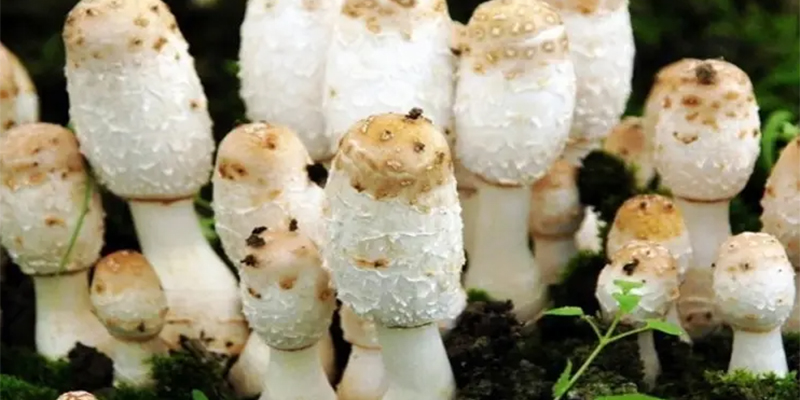There are tips for cultivating Coprinus Comatus with fungus chaff

Cultivation of Coprinus comatus with fungus chaff rich in nutrients after the cultivation of Pleurotus ostreatus not only makes efficient use of the waste after cultivation of Pleurotus ostreatus, the biotransformation rate reaches about 250%, and reduces the production cost. The output, quality and benefit of Coprinus comatus have been improved again. Here are some tips for cultivating Coprinus comatus with mushroom chaff:
Preparation of compost The chaff of the cultivated Pleurotus ostreatus is crushed, dried in the sun, and weighed.
Add wood chips or grass chips 30% by dry weight, corn mixed flour (crushed corn into soybean-sized skin, powder, and grain mixture) 10%, dry cow dung or dry chicken manure 6%, lime powder 2%, gypsum powder 1%, plant ash 3%, nitrogen-fixing fertilizer 0.2%. Add water and stir to make the water content reach about 65%. After mixing well, put it into the pile for fermentation, and turn the pile 2 to 3 times in the middle.
Load inoculation:
1. Raw meal inoculation
Pack the fermented compost into bags according to the conventional method, and insert 40-50 grams of Coprinus comatus cultivars at both ends and the middle of each bag. After receiving it, put it in a clean room, and cultivate it at a suitable temperature under shading until the bag is full of mycelia.
2. Clinker inoculation
Bagged by conventional method, sterilized in a space sterilization bag for 4-5 hours, or sterilized in an atmospheric pressure sterilizer for 8-12 hours. After taking it out, use a new open-type edible fungus aseptic inoculator to fully open the mouth of the bag for inoculation, and insert 40 to 50 grams of Coprinus comatus cultivars at both ends of each bag. After receiving it, put it in a clean room, and cultivate it at a suitable temperature under shading until the bag is full of mycelia.
Mushroom bed fruiting The fungus bags full of mycelium are discharged upright on the ground of the fruiting field to form a fungus bed, and the mouth of the bag is opened to straighten the fungus bag film. Cover the surface of the material in the bag with 2 to 3 cm thick soil, spray water to moisten the soil, cover the surface of the mouth of the tube with a layer of newspaper, and spray water to make the relative humidity of the air reach 85% to 90%. After harvesting the first mushrooms, change the direction of the fungus bags, with the opening of the unfruited end facing up, rearrange the bed of bacteria, open the mouth of the bag, cover with fertile soil, and grow the bacteria and produce mushrooms until the end of harvesting. After picking mushrooms at both ends of the fungus bag, remove the tube film of the bag, cut the fungus sticks vertically from the middle, arrange the cut surface upwards to form a fungus bed, and cover the bed with a thickness of 2 to 3 cm. Spray water to moisten the soil, cover the soil surface with newspaper or arch film to cultivate bacteria and produce mushrooms, and mushrooms can also be harvested for 2 to 3 tides.
Timely harvesting of Coprinus comatus has extensive, anti-miscellaneous, anti-aging, non-clay mycelium, and after covering, the mycelium can survive winter or summer in the soil with climate and seasonal changes. When the suitable temperature is 8°C-32°C, it can naturally recover its vitality and break through the soil to produce mushrooms. No pests and diseases occurred during the growth period. Harvest in time when the fruiting body stretches upwards to 20-30 cm, the cap tightly wraps the bacteria, and the ring just loosens into an unopened umbrella shape. Be careful to prevent the edge of the cap from being harvested out of date from the stipe, open the umbrella, autolyze or turn black, and lose commodity value. When harvesting, use your hands to gently lift the mushroom body and pull it out in a rotating manner, and use a sharp knife to cut off the soil on the mushroom feet, and then it can be sold fresh on the market.

(1)(1).jpg)
 CONTACT
CONTACT